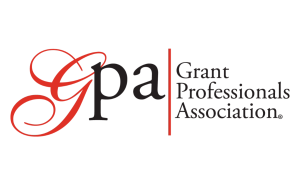Winning a slice of the hundreds of millions of foundation dollars given away each year is a perennial concern for fundraisers. Your odds will be improved more by the quality of your grant applications than the quantity. “Spending a lot of time on a few good fits is much more productive than spreading your time on a lot of poorly conceived applications, very few of which will stick,” according to Shawn Morested, vice president of grants for New York Community Trust.
The topic was the focus of a panel discussion on foundation funding trends featuring her and Sabrina Hargrave, director of programs for Brooklyn Community Foundation, at the recent Fundraising Day in New York conference, the annual gathering of the Association of Fundraising Professionals’ New York City chapter (AFP-NYC).
Both emphasized the importance of researching a foundation’s grantmaking practices before applying. Some foundations, like New York Community Trust, oversee a patchwork of funds whose distribution is in many cases restricted by donor intent. Conversely, organizations such as the Brooklyn Community Foundation, with a mission based around racial and social justice, have a more clearly defined set of criteria for determining awards. Ensuring your grant application aligns with a foundation’s focus can save you time and improve your chances.
“It takes a lot less time to watch a couple of videos on a foundation website of a not very glamorous vice president of grants talking about what we do and don’t fund than it does to write a 10-page proposal to us that has no chance of making it past the first round,” Morested said.
The good news is that foundation leaders, whose job it is to award grants, will “bend over backwards” to make a prospective match work when they find one, according to Morested. The temptation to make inflated claims in your application is a pitfall to be avoided, however.
“If you’re going to put any claims of impact into your application, make sure they’re verifiable because I’m going to need to ask questions about it. So, be real,” said Hargrave.
That advise extends to site visits that prospective grantmakers might want to make before deciding on an application. Morested, a former schoolteacher, recalled one such visit she made to a middle school as part of a writing grant application process. Much to the classroom teacher’s chagrin, some of the students began discussing inappropriate and salacious topics during the visit. “I did blush a few times,” Morested joked. “But the young people were thoroughly engaged in what they had written, which demonstrated to me that they were getting exactly what they needed. It felt real and not like I was getting a show, which I was later able to explain to my board.”
Foundation leaders are becoming more mindful about broadening philanthropy’s reach to historically marginalized communities, according to Morested. “We’re doing as much as we can to influence our donors to think about philanthropy in a different way and to ask: Am I supporting a diverse set of organizations? Am I supporting organizations led by people of color? Am I making risky grants?” Morested said.
Other insights shared by the panelists included:
- Less is more. “I have shown up to site visits at organizations where I’ve had to face nine or more people and it felt like a job interview. Having, at most, two or three people that you can engage in a deep conversation with is much better,” Hargrave said.
- Communication doesn’t end the moment you submit your application or receive a grant. “Some of the changes that are critical for us to be informed about, and that help build trust and understanding, are major staffing changes,” Hargrave said. “We like to consider ourselves partners, and not telling us or having a plan about hiring a replacement or who’s taking over that person’s work are major red flags for us.”
- “Schmoozing” a foundation’s leaders won’t likely get you nearly as far as the quality of your application. “Our board is an oversight board, not an active grantmaking board. So, going to them about grants or having your friends go to them isn’t a great strategy. Again — substance, substance, substance,” Morested said.
“My job is to give away money, but I need you to do your job as much as you need me to do mine,” Hargrave concluded.








